Experimenting with collage is something I have really enjoyed exploring over the past six years. I enjoy everything about the process. The trawling through hundreds of magazines to find the perfect glue mixture and colour theory to compliment. I will always love the smell of an old magazine, it makes me feel nostalgic. I wonder how many hands and eyes have graced these pages before I make something beautiful from it.
Since returning to analog collage, I have caught myself thinking about the artists who inspire me. I have read several books in reference to contemporary art and they always invoke a sense of how I can push the proverbial boundary. I want to share these artist’s with you! Perhaps you already know them or maybe you are just starting to learn about collage art; either way they should be celebrated! These are my top five favourite artists who have incorporated collage into their work and practice.
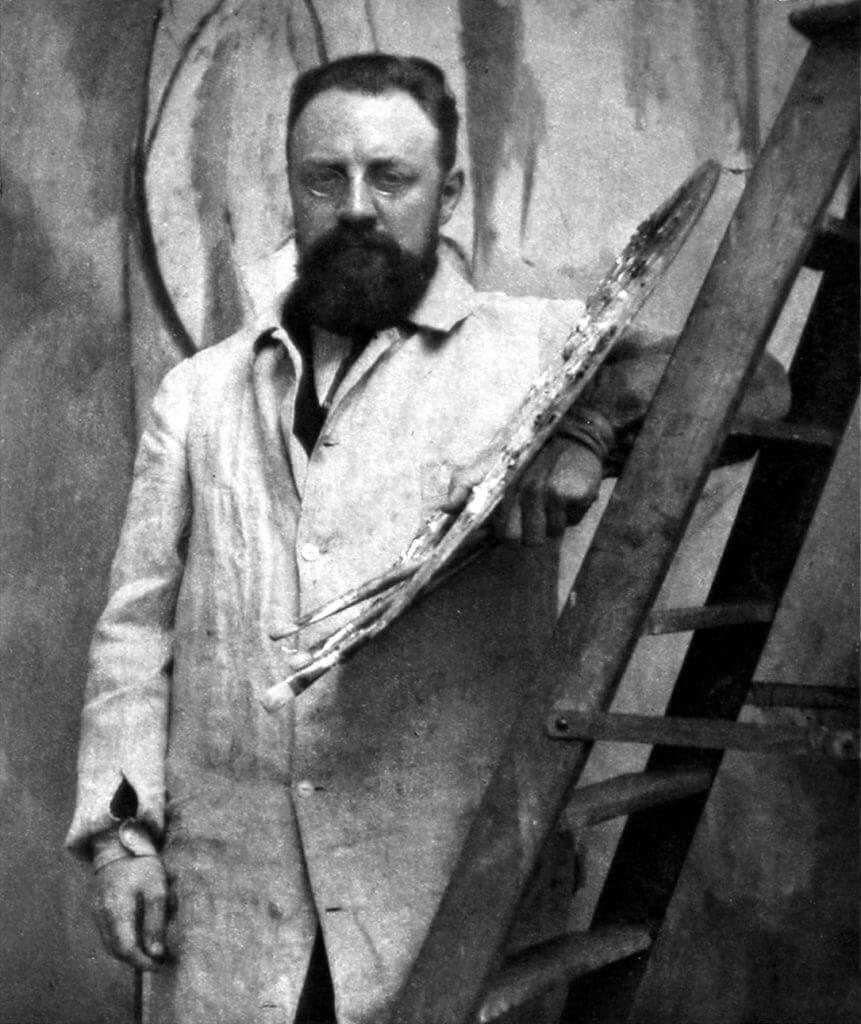
Henri Matisse
Henri Matisse (b. 1869 – d. 1954) was a French artist known for both his use of colour and original draughtsmanship. He was a printmaker and sculptor, but was primarily known as a painter. He is regarded as one of the artists who best helped define the revolutionary developments within the visual arts throughout the twentieth century. Responsible for significant developments in painting and sculpture. Matisse and Pablo Picasso helped define and influence radical contemporary art. Matisse is recognised as a leading figure in the Modern Art movement due to his mastery of expressive language using colour and drawing. This is displayed throughout his body of work spanning over half a century.
Matisse was diagnosed with abdominal cancer in 1941 and underwent surgery that left him disabled. As painting and sculpture became a physical challenge he turned to a different type of medium. With the help of his assistants, he began creating analog paper collages (decoupage). His cutouts are among the some of the most admired and influential works. Through this unfortunate health event it found him having a new lease on life and led to an extraordinary burst of expression for Matisse. In 1947, he published “Jazz” a limited edition book containing prints of colourful paper cut collages accompanied by his written thoughts.
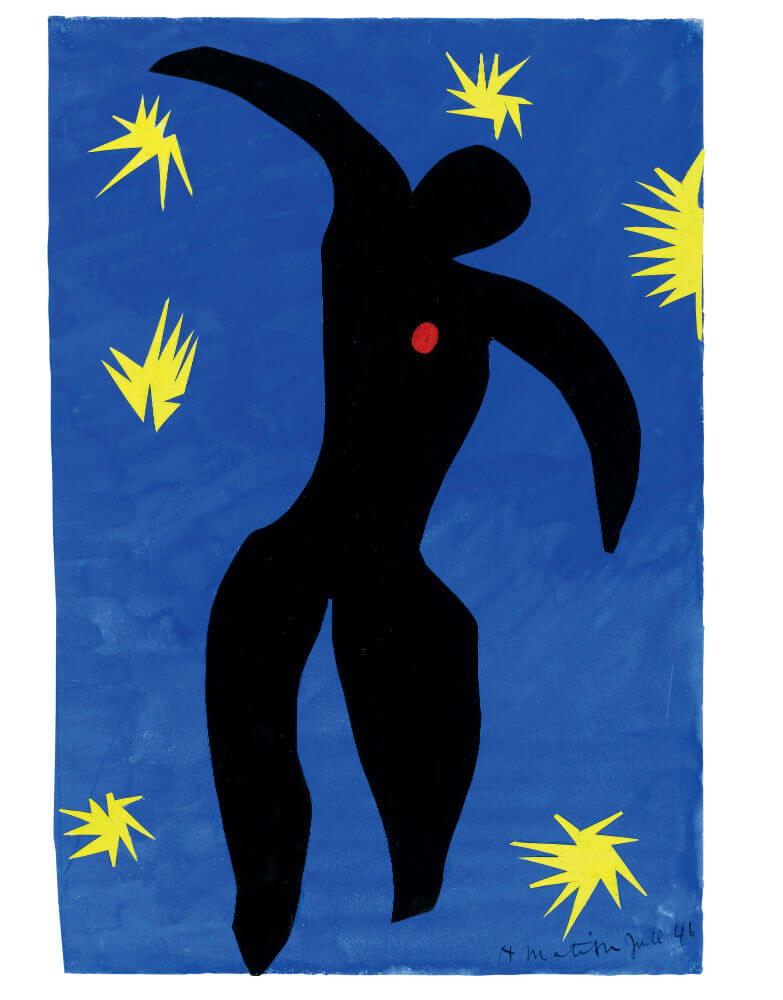
He would cut sheets of paper, pre-painted with gouache by his assistants, into shapes of varying colours and sizes, and arrange them to form lively compositions. Initially, these pieces were modest in size, but eventually transformed into murals or room sized works. The result was a distinct and dimensional complexity – an art form that was not quite painting, but not quite sculpture.
Read more about Henri Matisse here.
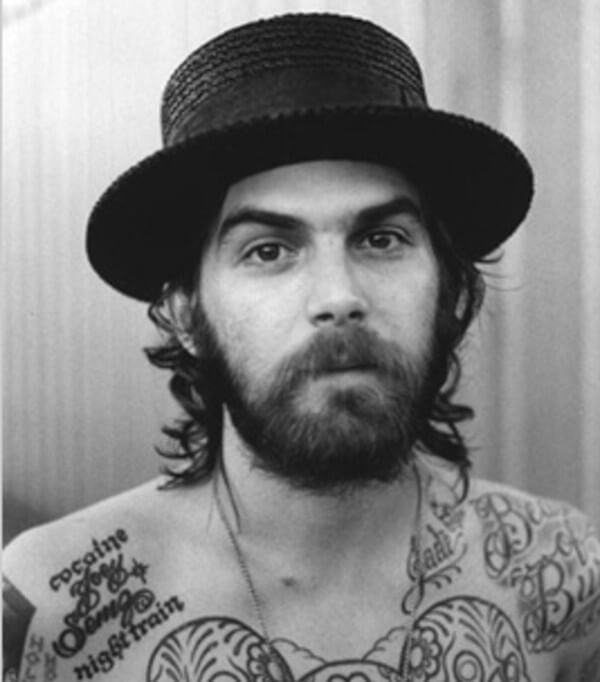
Dash Snow
Dashiell “Dash” Snow (b. 1981 – d. 2009) was an American artist from New York City. He grew up on the Upper West Side of New York and was known to be rebellious. In the 1990’s he was a member of the IRAK graffiti crew and used the tag “SACE”. His family was well known for their philanthropy and collection of American art.
Although he did not graduate from High School, his career as an artist started as a teenager when he started to take photographs of places, as he said “…he might not remember the next day due to hard partying…”. In 2005, he had his first solo art exhibition and was included in the 2006 Whitney Biennial – a huge feat for any artist. The Wall Street Journal profiled Dash as one of ten emerging artists in an article titled “The 23-Year Old Masters”. Dash was most infamously known for using his own semen applied on or splashed across newspaper photographs of police officers and other authority figures.
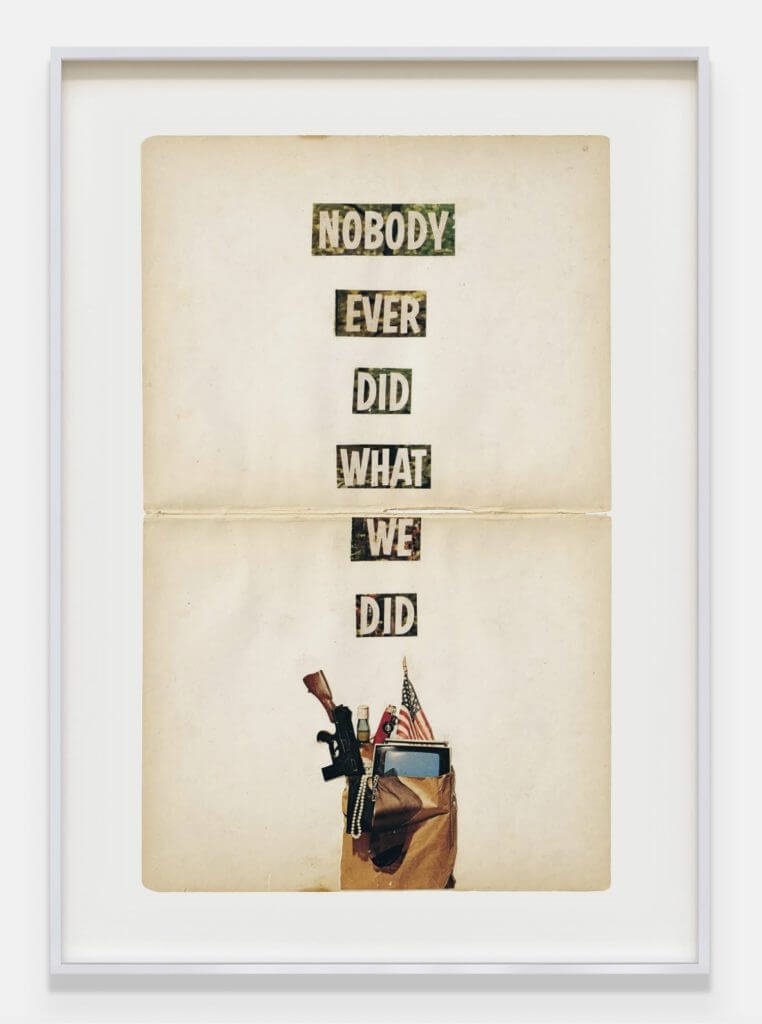
Read more about Dash Snow here.
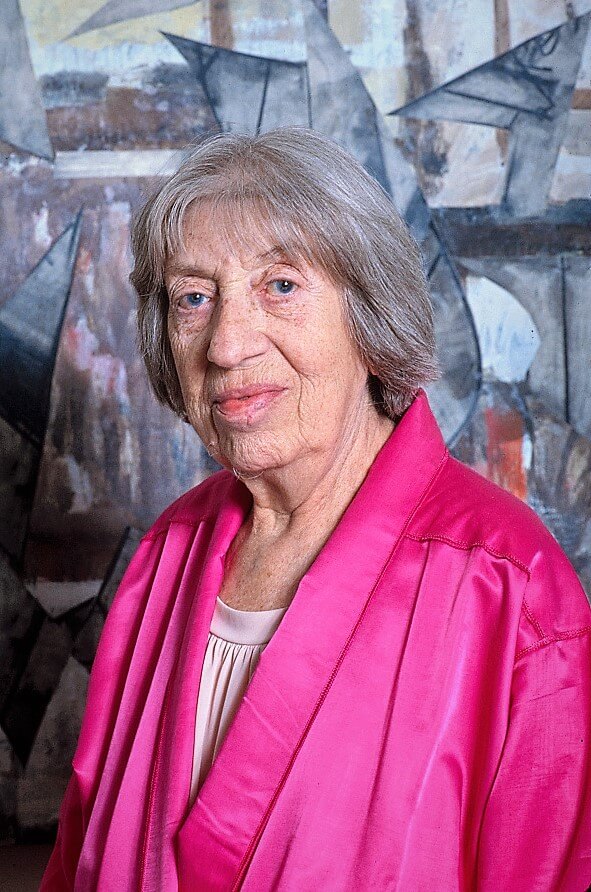
Lee Krasner
Lenore Krasner (b. 1908 – d. 1984) was an American abstract expressionist painter. She was linked as the wife of artist Jackson Pollock. She is one of the few female artists to have had a retrospective show at MoMA. From an early age Krasner knew she wanted to pursue art as a career. Her career began as a teenager as she sought out enrolment at Washington Irving High School for Girls due to their Art major. After graduating she attended the Women’s Art School at Cooper Union on a scholarship. From there she continued to expand her knowledge of art well into the 1930’s.
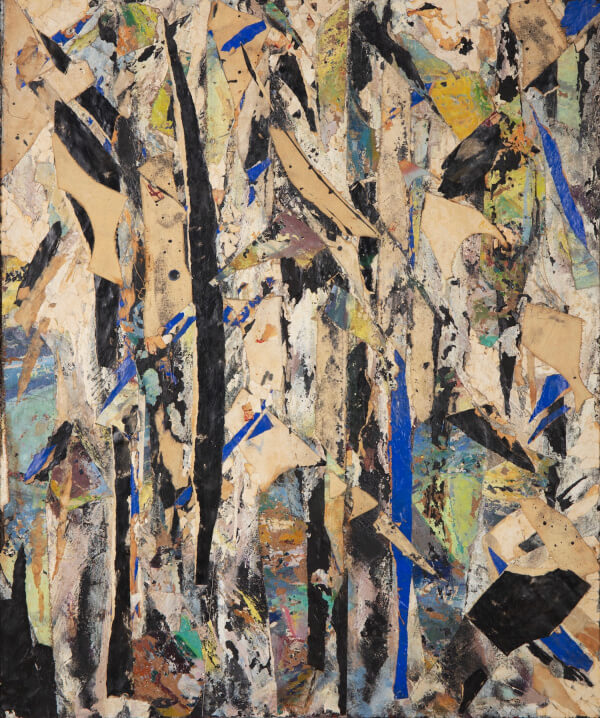
Her abstract, gestural and expressive works incorporated painting, collage painting, charcoal drawing and occasionally mosaics. She would often cut apart her drawings and paintings to create her collage. She often revised or completely destroyed an entire series of works due to her critical nature and as a result her surviving body of work is relatively small.
Read more about Lee Krasner here.
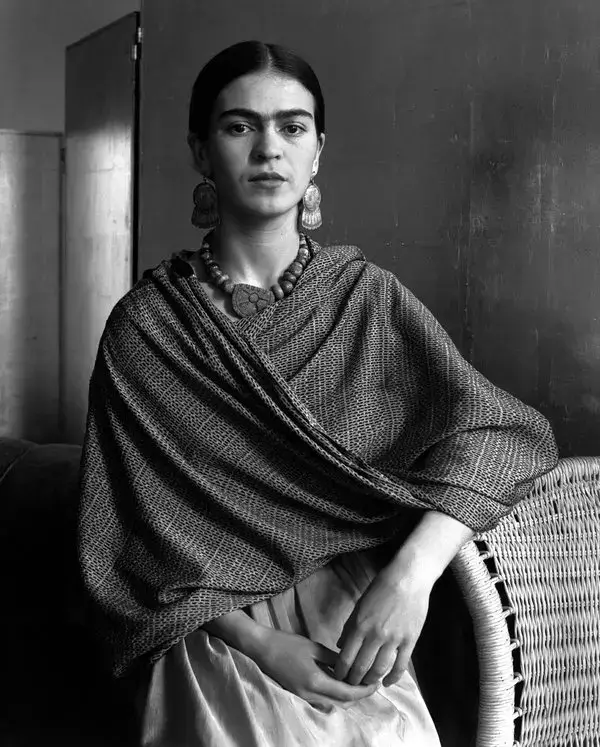
Frida Kahlo
Frida Kahlo (b. 1907 – d. 1954) was a Mexican painter, who mostly created self-portraits. Inspired by Mexican popular culture, she employed a native folk style to explore questions of identity, post colonialism, gender, class and race within society. Her paintings often had a strong autobiographical element along with a mixed realism and sense of fantasy. In addition to belonging to the post-revolutionary Mexican movement, which sough to define Mexican identity, Kahlo has been described as a Surrealist or magical realist.
Kahlo traveled to the United States on several occasions with her then husband Diego Rivera. Towards the end of their extended stay in the US she would grow homesick. She did not feel at home in the “New World”. She desperately wanted to return to Mexico but Diego refused. In 1933, she painted the work “My Dress Hangs There” which incorporates collage and depicts an American Capitalistic way of life. This painting is unusual as she didn’t feature herself in the painting… probably a testament to the fact she felt detached to her surroundings.
In 1938, Kahlo had a major exhibition at a New York City gallery selling near to half of the paintings exhibited. Although she didn’t consider herself a Surrealist painter she became close friends with one of the primary figures in that movement, Andre Breton. That following year Kahlo went to live in Paris for sometime, there she exhibited more paintings and developed friendships with artists such as Marcel Duchamp and Pablo Picasso. After Kahlo’s death, the feminist movement of the 1970s led to a renewed interest in her life and work, as Kahlo was viewed by many as an icon of female creativity.
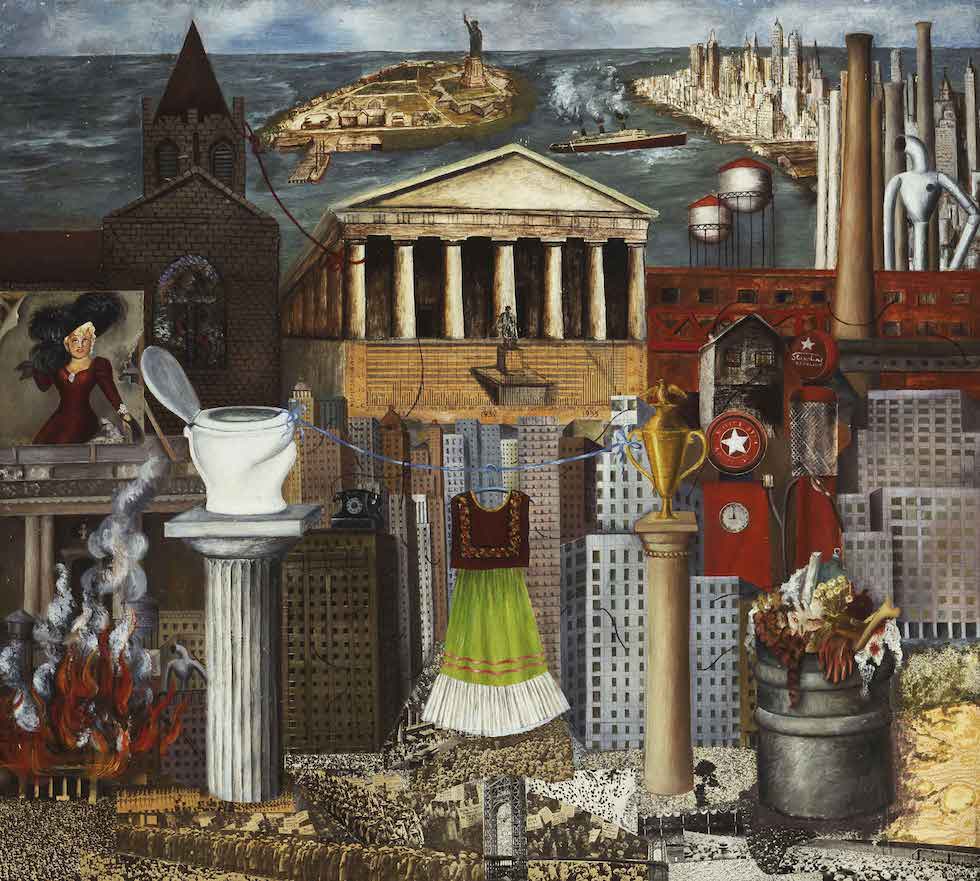
My Dress Hangs There, 1932
Read more about Frida Kahlo here.
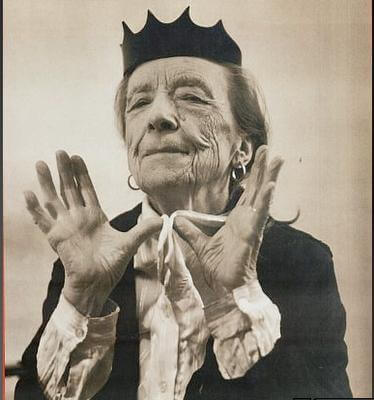
Louise Bourgeois
Louise Bourgeois (b. 1911 – d. 2010) was a French-American artist, best known for her large scale sculpture and installation art. She was also a prolific painter and printmaker. She explored a variety of themes including domesticity and the family, sexuality and the body, lastly death and subconscious thought. Her work has been linked with Surrealism and Feminist Art, although she is not formally affiliated with a particular artistic movement.
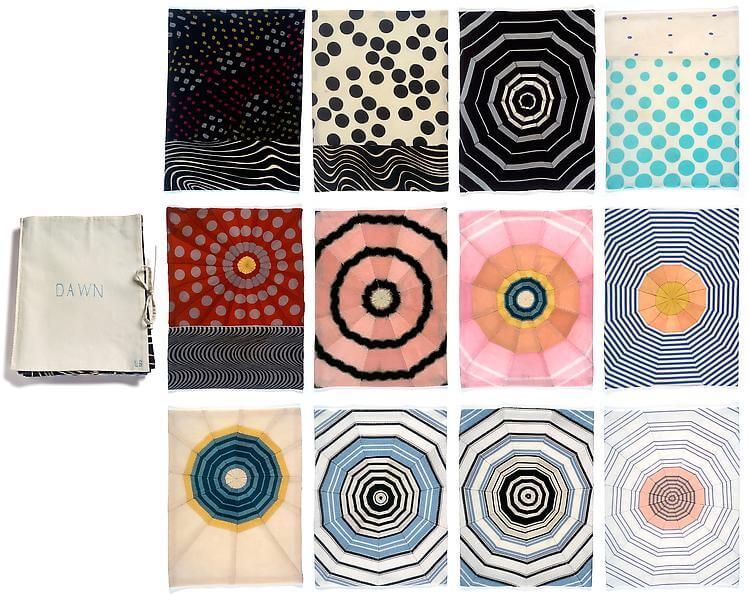
She started “fabric drawing” by the mid 1990’s by assorting old napkins, table cloths and other assorted materials collected over a lifetime into a series of collages and sculptures. Although her connection to fabric goes back to her childhood years. During this time she would help at her family’s tapestry restoration workshop. As an adult, she longed associated the act of sewing with repairing on a symbolic level. She believed she was attempting to fix the damage she had caused in personal relationships.

